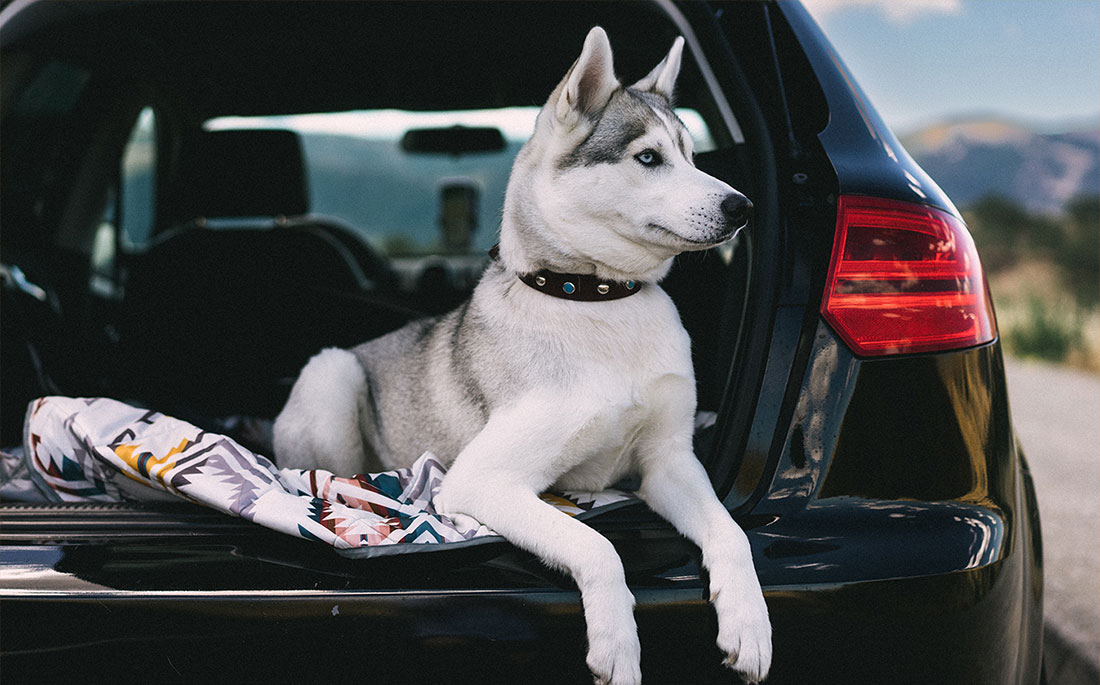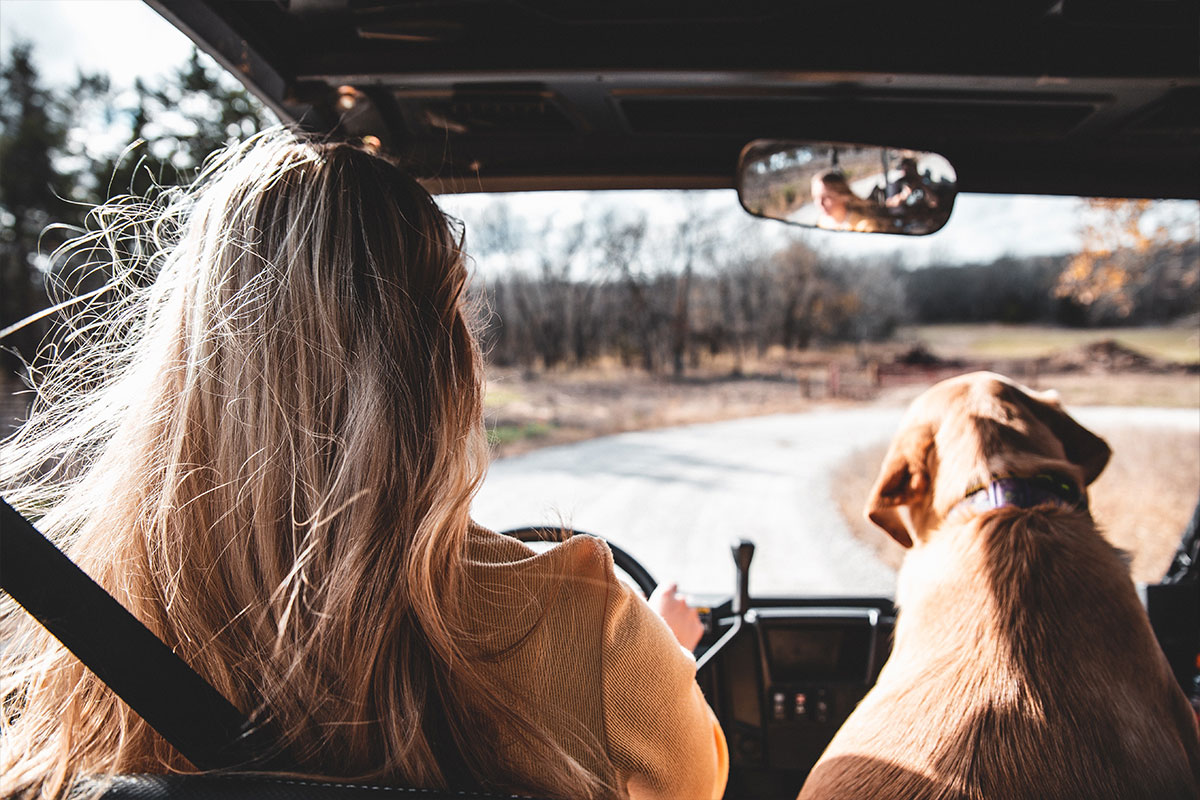

We have come a long way from letting our dogs in the car only when they have an appointment at the vet's. Now, our furry friends travel everywhere with us. From cross-country road trips and driving to staycation cottages to simply joining us to meet friends for a pub lunch - our pet dogs are spending more time than ever with us in the car.
However, as much as we want to take our four-legged companions on all of life's adventures, there are important things you need to consider before taking them in the car with you: there is the Highway Code to follow to ensure you're safely travelling with a dog; dogs can be prone to car sickness; some dog breeds adjust to car travel much easier than others and, if you don't clean up after your pup properly, you could be putting off potential buyers when it comes to selling your car.
We've spoken to professional dog trainers, car cleaning experts, dog-owning motorists and the general public to create a useful guide of information all about travelling with your dog in your car.

For many drivers, the Highway Code is something that you spend a lot of time pouring over before your driving test, and then rarely revisit. However, it's super important to keep yourself familiar with the information in the Highway Code, especially if you travel with your pet in the car. There are certain rules that need to be followed, otherwise, you could be at risk of facing a £5,000 fine.
The Highway Code states that dogs must be suitably restrained when travelling in a car so they cannot distract the driver or cause injury to either themselves or the motorist. It says:
If you aren't aware of the Highway Code regarding travelling with dogs, you aren't alone. We surveyed 700 British drivers who own dogs and discovered over a third are unaware of the Highway Code's requirement to properly restrain dogs in cars.
If you cause an accident due to not safely travelling with your pet in the car, you could be fined up to £5,000 for careless driving.
Our survey of British drivers who own dogs also revealed:
If your dog struggles with car journeys and presents disruptive behaviour such as crying, panting, barking or just generally seems uncomfortable, then it's likely to impact how stressed or even distracted you become whilst you are driving the car.
If this is the case for you, then you should not be dissuaded by your pet's behaviour. Like anything with dogs, some things come easily while others need more training and patience. As riding in a car isn't a natural thing for a dog to do, it's something you shouldn't take for granted and something you should be prepared to help teach your dog to master.

Make sure your dog is calm: Adam's key advice to encourage a calmer attitude to the car is to only invite your dog into the car once they are in a calm state, and only let them out of the car from the other end if they are calm. This is so your dog associates being in a calm state (with the reward being the fun waiting at the other end of the car ride).
Give them plenty of exercise before a journey: Whilst a crate-trained dog will already be familiar with a car crate, it's important that any dog can work off their pent-up energy prior to a car journey so that they are more likely to relax and rest in the car crate.
Take regular breaks on a long ride: It is incredibly important to factor in frequent stops to allow your dog a chance to take a break. Most dogs will travel better if they have regular exercise breaks on a long car ride.
How to solve car sickness in dogs: Some dogs are more prone to car sickness than others. For example, in Adam's experience, he finds that a lot of Rottweilers struggle with sickness in the car.
Here are Adam's top three tips to help remedy motion sickness:
The importance of restraining your dog: For your dog's safety, your own safety and the safety of others, keeping your dog suitably restrained in your car is of utmost importance.
We asked Iwan Lloyd Jones of Lloyd Jones Detailing for his best cleaning routine when it comes to eliminating the smell of dogs, dog hair and any other traces of your pup to make it sale-ready.

Although dog owners will never understand those who don't like furry friends, many people find dogs unhygienic and off-putting. Our survey of over 1,100 people reveals just how much a car that has been owned by a dog-lover appeals to (or repels!) the general public:
By analysing which dog breeds are mentioned the most as being the best car companions, across 25 different pet websites, we can reveal that there certainly are specific dog breeds that tend to find car travel less stressful, providing you with the perfect road trip buddy.

Our analysis found that Labradors take the crown as being the most mentioned 'best dog to drive with' - being named as the most car-compatible breed by 22 canine experts. Known for being both friendly companions and excellent working dogs, Labradors are widely considered to be amongst the easiest dogs to train thanks to their gundog nature. Despite their high-energy levels, they are known for being compassionate and easygoing dogs that are always eager to please their owners - no wonder they are so easy to travel with!

The second-best breed named by pet experts is the Chihuahua. It is primarily due to the size of the world's smallest dog that makes them such great road trip buddies, as they are more likely to feel comfortable in the car as they will have much more space available to them. Despite having a feisty temperament, they are very quick-witted and easily trained, so even if your Chihuahua doesn't take well to cars at first, they will quickly get used to it.
Golden Retrievers are third on the list; like Labradors, they are also extremely well-natured and easygoing, making them trouble-free travel pets. Many other larger breeds feature on the list including, Poodles (joint fifth), Dalmatians and Great Danes (joint eighth), Clumber Spaniels (joint ninth) and German Shepherds (joint 10th).
| Rank | Dog Breed | No. mentions by experts? |
|---|---|---|
| #1 | Labrador | 22 |
| #2 | Chihuahua | 17 |
| #3 | Golden Retriever | 16 |
| #4 | Maltese | 12 |
| #5= | French Bulldog | 11 |
| #5= | Poodle | 11 |
| #6 | Pomeranian | 10 |
| #6= | Dachshund | 10 |
| #6= | Boston Terrier | 10 |
| #7 | Yorkshire Terrier | 9 |
| #8= | Dalmation | 8 |
| #8= | Great Dane | 8 |
| #9= | Clumber Spaniel | 7 |
| #9= | Jack Russell Terrier | 7 |
| #9= | Bichon Frisé | 7 |
| #10= | German Shorthaired Pointer | 6 |
| #10= | Beagle | 6 |
| #10= | German Shepherd | 6 |
Best Dogs For Car Travel: By scraping data from 25 reputable pet sources detailing the best dog breeds for car travel, we tallied the breeds mentioned the most. Data is sorted from the most mentioned by experts, to the least mentioned. The breed with the most mentions is crowned the best to travel with.
Survey Results: Using Censuswide, we surveyed 700 drivers who own dogs' questions relating to the Highway Code and the ways they restrain their pets. Again, using Censuswide, we then surveyed 1,156 British respondents about their feelings regarding dogs in cars and how it would affect their decision to purchase a car that had been used by dogs.
Other Sources
Adam Spivey, Southend Dog Training
Iwan Lloyd Jones of Lloyd Jones Detailing
The Highway Code